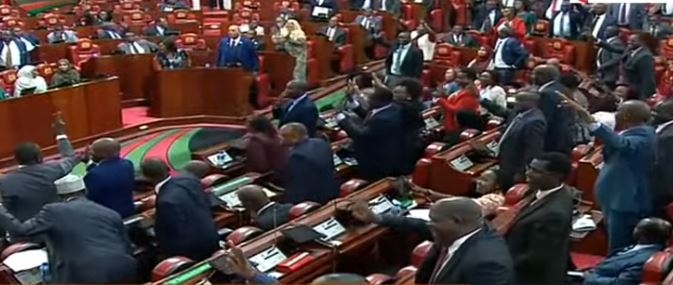Kenyan manufacturers can tap at least 55 per cent of the potential presented by the African Continental Free Trade Area (AfCFTA), sector lobby says, if pending trade barriers are flattened.
This is through the Tripartite Free Trade Area (TFTA) which also gives other member states a chance to increase market access.
Consisting of 26 member countries, the Comesa-EAC-SADC Tripartite which is up for implementation is expected to accelerate economic integration for the people of the Eastern and Southern African Region.
According to the Kenya Association of Manufacturers (KAM), the pact offers a strategic path to expand regional integration, connecting Cape Town to Cairo through free trade, a move that will allow member states to grow market access.
However, this can be achieved if pending trade barriers are addressed, KAM chief executive Tobias Alando said.
“The potential of Comesa for Kenya’s manufacturing sector and indeed the entire region is enormous. Although Comesa has proven to be a relatively seamless market for Kenyan manufacturers, we still face some bottlenecks that hamper the growth of intra-Comesa trade,” Alando said.
This can be resolved by taking deliberate measures to reduce the cost of doing business and enhance the ease of doing business, he noted.
Trade barriers in Comesa are primarily non-tariff barriers such as slow and complex customs procedures, restrictive regulations and technical standards, which hinder the free movement of goods and increase costs.
Despite the Comesa Free Trade Area established in 2000, NTBs, along with infrastructure gaps and policy inconsistencies, continue to prevent the region from reaching its full trade potential.
While Comesa has a small number of non-trade barriers, some existing ones have taken over 10 years to resolve.
“We are seeing increased market access regulations such as permits requirements. While such measures may be driven by well-intentioned local policy objectives, they distort regional markets, going against the spirit of the free trade area,” Alando said.
“By harmonising trade policies across the member trading blocs, it promises to be a game-changer for African economic integration, presenting a real opportunity to enhance Kenya's and the region’s capacity to trade and industrialise more efficiently.”
Central to COMESA’s economic transformation agenda, is manufacturing. In Kenya, the sector plays a pivotal role in job creation, value addition and export diversification.
During the recent Comesa and Heads of State and Government Summit in Nairobi, where President William Ruto assumed the chairmanship of Comesa, he strongly advocated for digitisation and removal of trade barriers to drive intra-Africa trade.
The continent, he said, must also leap into the Fourth Industrial Revolution by integrating automation, artificial intelligence and advanced manufacturing.
“This is how we will transform our rich mineral and agricultural resources into high-value finished products within Comesa, creating quality jobs, boosting incomes and expanding our economies,” he said.
Comesa remains one of Kenya’s most important trading partners and a key source of raw materials and intermediate products, with the country also keen to tap the 1.3 billion population market under AfCFTA alongside regional markets.
Today, Africa accounts for approximately 42 per cent of Kenya’s export market, valued at Sh425.6 billion last year.Comesa contributes 11 per cent with foreign exchange earnings from exports to the bloc closing at Sh331.7 billion in 2024.
The East African Community (EAC), whose majority of member states are also in Comesa, makes up 30 per cent, valued at Sh321 billion in 2024–Economic Survey 2025.
Only 11 per cent of Kenya’s imports are currently sourced from Africa, with the value having decreased from Sh277 billion in 2023 to Sh270.7 billion in 2024.
Kenya is leading the conversation on increasing intra-Africa trade, which remains at a low of 14 per cent with most African countries being net importers of finished goods mainly from Asia and Europe.














![[PHOTOS] Betty Bayo laid to rest in Kiambu](/_next/image?url=https%3A%2F%2Fcdn.radioafrica.digital%2Fimage%2F2025%2F11%2F3b166e2e-d964-4503-8096-6b954dee1bd0.jpg&w=3840&q=100)


